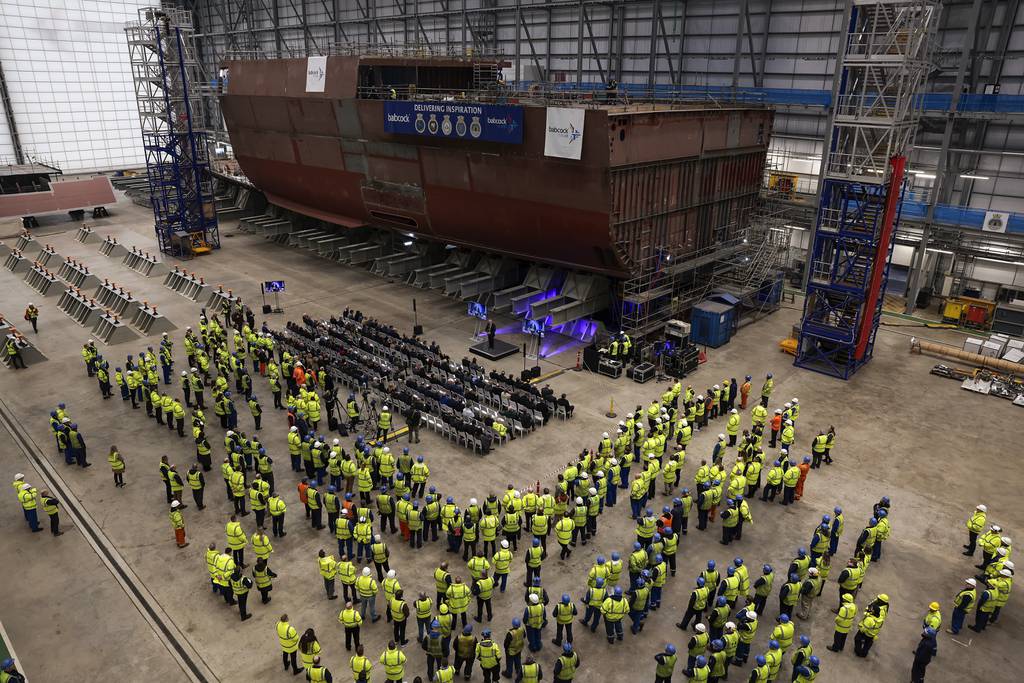
BERLIN — The British Royal Navy plans to buy up to six new multirole support ships and give its future frigates the ability to attack land-based targets, the defense secretary announced Tuesday. The offensive capability comes as the military learns lessons from recent operations in the Red and Black seas, Grant Shapps noted, with the former involving a fight against Yemen-based Houthi militants and the latter related to the nearby war in Ukraine. Russia launched a full-scale invasion of its neighbor in February 2022.
In full, the service is seeking 28 new ships to turn the tide on a shrinking fleet, Shapps said at the Sea Power conference in London. The 2017 National Shipbuilding Strategy first formalized the goal, which the government of Prime Minister Boris Johnson refreshed in 2022.
Under the strategy, the U.K. seeks to become “the world’s most competitive maritime nation by 2050,” Sarah Kenny, then-chair of the industry association Maritime UK, said at the time.
The push to build new ships also comes a month after the current prime minister, Rishi Sunak, announced a £75 billion (U.S. $94 billion) increase in defense spending over the next six years, raising British military expenditures to 2.5% of gross domestic product amid an economy just beginning to recover from a recession and struggling with stubbornly elevated inflation rates.
Shipyards across the U.K. are sure to be abuzz in the years to come, as Shapps pledged to have the new entrances to the Royal Navy constructed domestically during a new “golden age” for British shipbuilding. Type 26 and 31 frigates will be built in Scotland; Astute and Dreadnought submarines assembled in Barrow-in-Furness in northwestern England; and fleet solid support ships produced in Belfast and Devon, the service stated in a news release Tuesday.
The six multirole support ships for the Royal Marines are to be versatile platforms that can carry aircraft, vehicles, insertion craft and unmanned systems. They are also expected to serve as mobile infirmaries to treat battlefield casualties. They are set to replace all of the Royal Navy’s current amphibious support ships in the early 2030s.
Meanwhile, the newly built Type 26 and 31 frigates will feature land-attack capabilities, Shapps said, following a recent trend among European blue-water navies. The Netherlands previously announced it will equip four of its frigates with Tomahawk missiles between 2025 and 2029, and France recently conducted a synchronized test-firing of naval cruise missiles from a ship and a submarine about 250 miles apart.
“Our operations in the Red Sea have proven that to meet the rising threats to freedom of navigation we must be able to destroy targets at sea, in the air and on land,” Shapps wrote on X shortly after announcing the addition of the weapons systems.
To support the upcoming “golden age” of British shipbuilding, there would need to be a “very big expansion” in domestic capacity, Shapps said.
Defense readiness has received new urgency from the British government in the aftermath of Russia’s invasion of Ukraine. There, British weapons have contributed to significant battlefield victories for Kyiv, including reportedly sinking Russian ships in the Black Sea.
Author: Linus Höller
Source: DefenseNews



